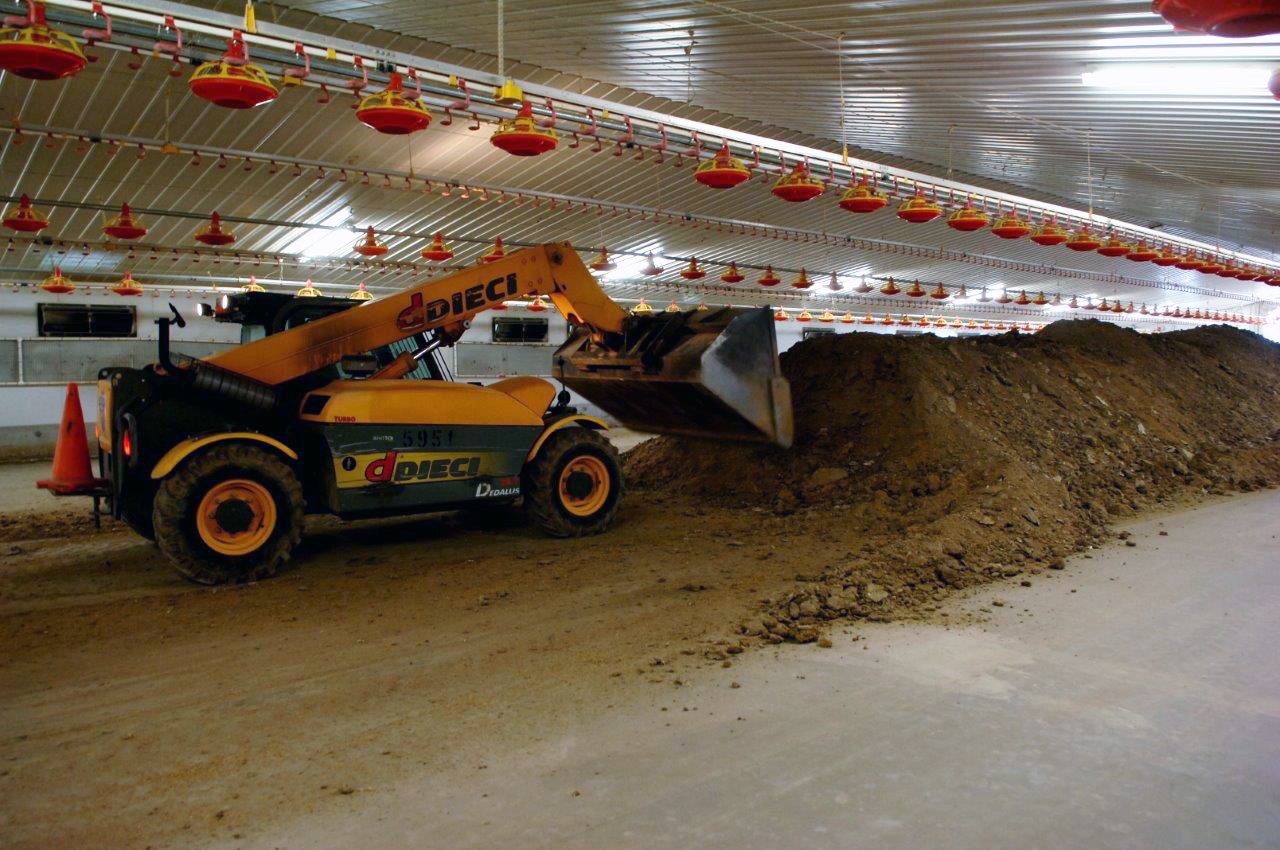Poultry litter – more than just a nitrogen source
Poultry litter is surely proof that one person’s waste is another’s windfall. Poultry litter is a highly cost-effective source of nitrogen. It is also a great source of the microbes essential for good compost production.
By Jenny Ekman and Geoff Martin
Poultry litter suitable for compost production is entirely sourced from broiler sheds. Litter is not just manure, but contains bedding material, feathers, blood, and potentially dirt or other materials. Manure from caged birds is less suitable, tending to be wet, sloppy, and low in carbohydrate. Litter from barn-based egg production and turkey manure are not suitable for making compost as they are relatively low in nitrogen.
What goes in affects what comes out
Modern broiler chickens are incredibly efficient converters of feed to body mass – approximately 1.5kg of chicken food produces 1kg of chicken. High feed use efficiency equals less waste, especially of the carbohydrates which nourish microbes during composting.
Despite this efficiency, feed still accounts for up to 70% of the cost of raising chickens. What goes in affects what comes out, so the type of feed used is clearly going to affect the attributes of the manure.
For example, broiler chickens were once fed mixtures of maize and soya, meat meals, offal, feather meal and tallow. However, the outbreak of mad cow disease in the UK focussed consumer concern about feeding meat meal (offal and poultry waste) products to chickens. Modern mixes are predominantly grains (wheat, barley, and sorghum) plus vegetable proteins and oils, vitamins, calcium carbonate, and other minor ingredients. These include enzymes to help the birds break down non-starch polysaccharides in grain.
Moreover, the life of a broiler chicken may be as little as six weeks, compared to 10 weeks a few decades ago. This factor, combined with dietary changes, has reduced nitrogen levels in manure from approximately 5.7% to 3.5%. Modern litter has 30% less phosphorus, as well as lower levels of fats, carbohydrates, uric acid, and enzymes than it once did. In particular, the decline in the enzymes uricase and urease, which break down uric acid, has reduced ammonia levels during Phase I – vital to kick start the breakdown of straw in the first 48 hours of composting1.
While the use of antibiotics in chicken feed as growth promoters and therapeutic agents has been declining, they may still be used by some producers. Such products are not fully metabolised within the bird. They may even be designed to be excreted to avoid contaminating the flesh. Presence of such products in manure could also potentially affect microbial activity during composting.
Bedding materials matter
The type of bedding material used will depend on what is cheap and locally available. For example, rice hulls make an effective bedding material, but availability depends on how much rice is grown, which is largely determined by the cost of water. During the drought rice production fell close to zero, so there were no rice hulls to be had. Sawdust and wood shavings are also used as bedding, however the prices of these materials have increased. The last two years of good rainfall have seen many chicken producers change to wheat straw, which is now readily available.
A 2019 study by AgriFutures Australia2 found that more than 65% of chicken meat producers were looking for alternative sources of bedding materials due to cost and supply issues. For example, wood shavings can cost $22-$40/m3 compared to $10-$15/m3 for straw. The study identified several other alternative litter materials including nut husks, oat hulls, stubble pellets, miscanthus grass, and tree-litter.
The type of bedding material used is likely to significantly alter the C:N balance in the waste product. For example, litter from wood shavings has much lower nitrogen content than that from rice hulls, with clear implications for composting.
Another change due to increased cost/reduced availability of bedding materials is the more frequent recycling of the litter by re-use, layering or mixing. In the past, about 70% of Australian broiler chickens were grown on new bedding, with the remaining farms practicing partial re-use3
In the US, litter may be re-used for up to 2 years before the sheds are fully cleared out. The bedding is windrowed inside the shed, allowing it to partially compost, before re-spreading for the next batch of birds4
Australian growers appear to be also recycling litter, altering both the volume and composition of material available for compost production. This material may have higher nitrogen than single use litter, but also lacks bulk. The result is an increased requirement for straw, which is more expensive than poultry manure.
In conclusion, compost producers need to maintain good communication with their poultry manure suppliers. They need to know if production methods change. The way the chickens are grown will affect not just nitrogen in the litter, but also moisture levels, density, and a multitude of other factors. And that in turn affects the quality of compost produced.
References
1 Martin G. 2022. Poultry manure in mushroom compost production. Dr Mush Advisory
2 Watson K, Wiedemann SG. 2019. Review of fresh litter supply, management and spent litter utilisation. AgriFutures Australia. 128pp.
3 Chinavasagam HN, Tran T, Blackall PJ. 2012. Impact of the Australian litter re-use practice on Salmonella in the broiler farming environment. Food Res. Int. 45:891-896..
4 LeBlanc B. et al. 2005. Poultry production best management practices. Louisiana Ag Centre.


